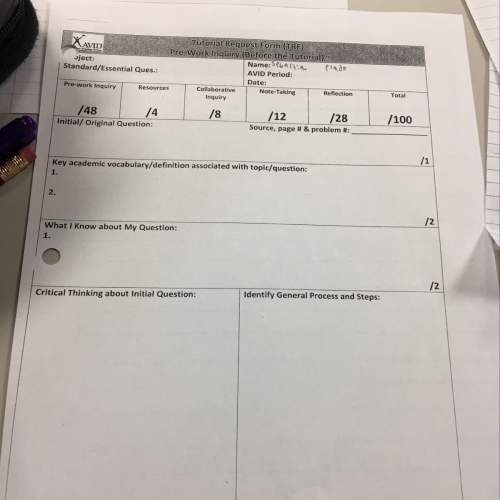
Mathematics, 12.11.2019 00:31 tiekert
Zar (1999) describes a setting in which it's desired to compare two different drugs to see which drug makes blood clot faster in samples taken from 12 people with hemophilia (one sample of blood per person) who agreed to be part of the study. here are three possible experimental designs for this situation. 6 of the people are assigned to drug d and 6 to drug g at random. the number of years the person's body has been unable to produce a normal amount of blood coagulation (a measure of severity of illness) is identified as a potential confounding factor (pcf), and the 12 people are grouped into 6 pairs in such a way that within each pair both people have the same value of the pcf; the assignment to drug b or g within pairs is done at random. the time to clotting is measured for all 12 people on four separate occasions; 6 of the people (chosen at random) are observed on the schedule.
(1) measure clotting time.
(2) administer drug d for an appropriate amount of time
(3) measure clotting time
(4) wait an appropriate time until all effects of the drug have disappeared
(5) measure clotting time
(6) administer drug g for an appropriate amount of time
(7) measure clotting time and the other 6 are treated similarly except that drug g is given first followed by drug b.
identify which, if any, of these designs can be described by the following terms: completely randomized, randomized-blocks, matched-pairs, repeated measures.
then briefly discuss which, if any, of these designs are valid for arriving at correct causal conclusions about the comparative effects of the two drugs, and (if any of them are valid) which are likely to be more accurate at estimating those effects.

Answers: 3


Other questions on the subject: Mathematics

Mathematics, 21.06.2019 18:10, russbeast6584
What is the value of x in the following equation. -x ^3/2 = -27
Answers: 1

Mathematics, 21.06.2019 18:30, genyjoannerubiera
Isuck at math ; ^; m a student solved this problem and said the answer is 3 feet. chase had a roll of ribbon that contained 7 7/8 feet of ribbon. he cut off one piece that was 3 5/8 feet long and another piece that was 1 1/4 feet from the roll. how much ribbon was left on the roll? is the student's answer reasonable? yes, the answer is reasonable. no, the answer is not reasonable. it should be about 2 feet. no, the answer is not reasonable. it should be about 13 feet. no, the answer is not reasonable. it should be about 4 feet.
Answers: 1

Mathematics, 21.06.2019 21:40, calebhoover03
Question 1 of 10 2 points different groups of 50 graduates of an engineering school were asked the starting annual salary for their first engineering job after graduation, and the sampling variability was low. if the average salary of one of the groups was $65,000, which of these is least likely to be the average salary of another of the groups? o a. $64,000 o b. $65,000 o c. $67,000 o d. $54,000
Answers: 2

Mathematics, 21.06.2019 22:30, lekepius3715
Given the system of equations presented here: 2x + 4y = 14 4x + y = 20 which of the following actions creates an equivalent system such that, when combined with the other equation, one of the variables is eliminated? multiply the second equation by â’4 to get â’16x â’ 4y = â’80 multiply the second equation by â’1 to get â’4x â’ y = â’20 multiply the first equation by 2 to get 4x + 8y = 28 multiply the first equation by â’1 to get â’2x â’ 4y = â’14
Answers: 1
You know the right answer?
Zar (1999) describes a setting in which it's desired to compare two different drugs to see which dru...
Questions in other subjects:

History, 21.02.2022 14:00

Mathematics, 21.02.2022 14:00


Mathematics, 21.02.2022 14:00


History, 21.02.2022 14:00

Mathematics, 21.02.2022 14:00

Chemistry, 21.02.2022 14:00





